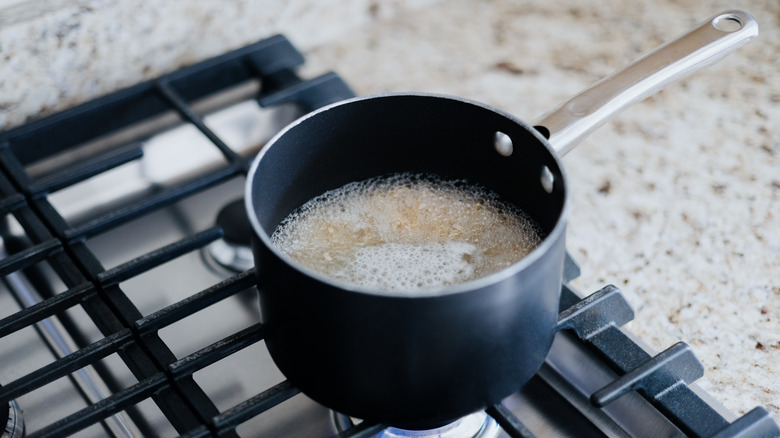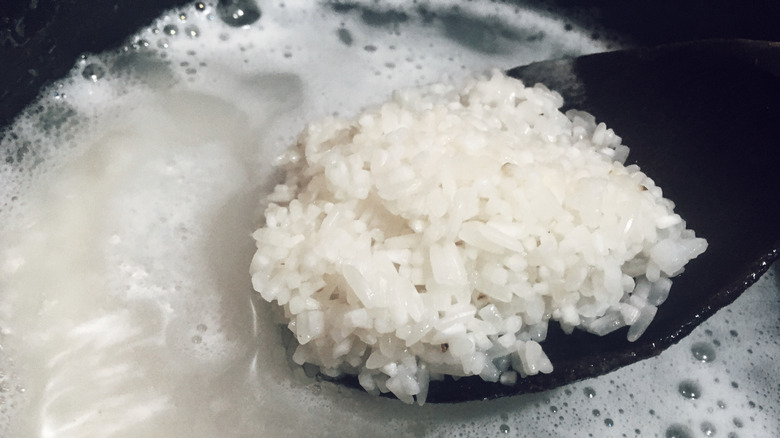We Asked An Expert To Finally Address What The Best Water-To-Rice Ratio Is
Rice is one of the simpler and more accessible ingredients to cook, yet it's still somehow easy to get it wrong. It's not like cooking pasta, where any leftover water gets drained; there's a fine art to achieving the correct water-to-rice cooking ratio. As if it weren't complicated enough, different types of rice actually need different amounts of water. We wanted all the information in one place, so we spoke to Kyle Taylor, recipe developer and content creator at HE COOKS, to get all the right numbers.
The expert explained that "the ratio depends on the rice," and he doesn't simply mean white or brown. Here is a comprehensive list of water-to-rice ratios, per Taylor's instructions, using one cup of rice in each scenario: Long-grain white rice needs 1.75 cups of water, jasmine and basmati rice both require 1.5 cups of water, brown rice needs 2.25 cups of water, and short-grain or sushi rice takes 1.2 cups of water.
Taylor also noted, "These are all stovetop or microwave ratios. For rice cookers, I usually follow the machine's cup-line guide, since volume and absorption differ slightly." To see if your rice is done cooking, you can always use the fingertip trick, but none of that matters without using the correct amount of water. You must also remember not to stir your rice as it's cooking, because that can lead to uneven texture — trust your ratio and let the water do its job.
Making adjustments to your rice ratios
As Kyle Taylor pointed out, sometimes you need to make adjustments to your water-to-rice ratio to best suit your cooking situation. One classic situation is cooking at high altitude where water boils faster. According to the expert, "Altitude affects boiling point and evaporation, which changes how quickly water absorbs." If you have to adjust your ratio, do so after you start the cooking process. It's all about finding the balance — you can always add more water, but it is much harder to remove what is already in the pot. "If your rice is too firm, add a splash of hot water and cover for [five to ten] more minutes off heat," Taylor reminded us. "The texture is fixable, just don't overcorrect too soon."
This advice can also be applied to dishes like rice pilaf, which often requires boiling rice with other ingredients already mixed in. Rice pilaf also occasionally calls for rice to be boiled in another liquid such as vegetable or chicken stock for flavor — but the ratio should still coincide with the type of rice you're using. In essence, you have to take special care to note exactly what rice you are reaching for and what it calls for when preparing, rather than grabbing the first bag you see off the shelf. Not only are different types better for certain recipes, but you'll also have the fluffiest results once you determine which of Taylor's water-to-rice ratios to rely on.


